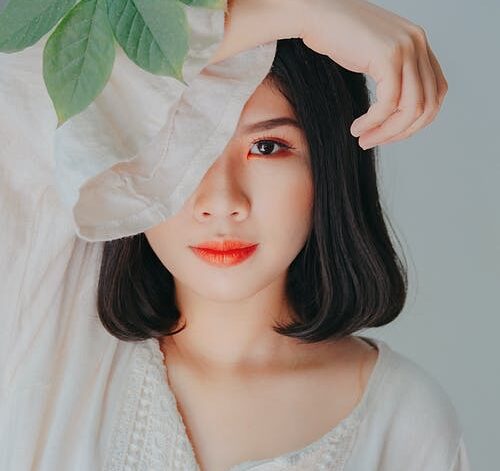We’ve all heard over and over that box dye is bad for your hair, but why? What are the ingredients that cause allergic reactions? On the other side of the spectrum, is organic hair color 100% natural? Henna is natural, can it cause a reaction? In this post I’ll delve into the details of these different types of hair dye in this ultimate guide to box dye, henna and organic color so you can make more informed choices with your hair.
The bottom line is that all hair color is not created equal. The fundamental difference is the quality and toxicity levels of the ingredients. The cheaper the color, the higher the more chemicals such as ammonia, PPDs, nitro dyes and metallic salts it will contain. For this reason, box dye is not good for your hair and can cause hair damage as well as potential chemical reactions. In extreme cases reactions to chemicals in hair dye can include swelling, dizziness and difficulty breathing. For this reason a patch test in a professional salon is essential, it is simply not worth the risk otherwise.
Simply put, professional brands will always be better than box dyes. Professional brands can also vary in their ingredients and some are higher quality than others. There are options out there that are free from many of the more damaging chemicals. In this post I will go into more detail about the different ingredients in hair color and what you, as a client, can look for when selecting a hairstylist and salon.
PPD, ammonia and other chemicals found in hair dye.
PPD stands for paraphenylenediamine and it is a colorless hair dye that requires oxygen for it to activate. This is the reason why in box colors there are two bottles, when mixed the PPD activates as it is exposed to oxygen. Darker hair dye contains higher levels of PPD. The chemical is also used to dye textiles, in cosmetics, in printing and even in oils, greases and gasoline. PPD is one of the highest causes of contact allergies according to the American Contact Dermatitis Society (ACDS).

Ammonia is an alkaline chemical which is used to increase the levels of pH during the hair coloring process. This softens and swells the cuticles, which allows the color to be absorbed into the hair shaft. Ammonia can cause damage to the hair cortex which is the layer below the cuticle. This can cause the texture of the hair to change and become rough and weak. Ammonia is also a skin irritant and can cause a skin reaction.
Metallic salts are often sold as ‘progressive colors’ and claim to make the hair look more natural over time. The problem with these chemicals are that they don’t mix well with other chemicals. Once you have a metallic-based dye in your hair, such as henna, it becomes risky to change your hair color as adding other chemicals on top of the metallic salts can cause a reaction such as smoking or burning hair.
This information is not to frighten you and turn you off coloring your hair. It is simply to educate and make you aware of the risks involved with hair color. The takeaways from all of this information is the importance of having your hair done professionally and using a professional product, as well as a full consultation and a patch test.
Organic hair color
100% organic color doesn’t exist as there needs to be some synthetic ingredients in order for the color to work effectively. However, there are many organic hair color ranges that use fewer chemical ingredients and more organic botanical ingredients. When selecting a brand, one must consider the percentage of natural vs chemical ingredients.
- Pigments
- PH adjuster (often ethanolamine is used instead of ammonia, one would want a low percentage)
- Botanical, organic ingredients
- Natural and naturally derived ingredients
I use O-way Hsystem color which is an award winning ammonia-free, organic hair color line. O-way have an assortment of beauty and lifestyle products that support ecologically–friendly daily practices.

Henna
Henna is a natural hair color made from a plant. It is used for temporary body art as well as hair color. Not all henna is created equal and it is important to check that your henna doesn’t have any additives. Often henna is mixed with other ingredients to achieve tones such as burgundy, black and brown tones. This usually means a high level of PPD and metallic salts, which means any other hair colors could react badly if you choose to switch from henna.
In conclusion
When it comes to selecting your hair color brand, the main consideration is what percentage of the ingredients are toxic chemicals vs natural and organic. You can be sure that when using a box dye, the ingredients will be harsher. The simple reason is that they need to make the product cheaply and the only way to do this is with chemicals. This increases the risk of chemical reactions, allergies and problems with changing your color in the future.
Natural does’t always mean better, as we’ve seen with Henna. If you choose to go the natural route, the question remains the same. What percentage of ingredients is natural vs chemical. Henna often contains high levels of PPD or Metallic Salts which can cause problems down the line.
In the end of the day, the safest choice is an organic brand with a professional stylist. Once you have had a consultation and a patch test, the chances of a reaction or allergy are extremely low. There is no reason you should not be able to color your hair safely once you have all the information to make better, safer choices.
Related questions
Does organic hair color last as long?
There is no reason why an organic hair color should not last as long when applied correctly. It is important to remember that professional stylists very rarely put just one color on the hair. The desired result often requires a combination of two or more colors and will need to be correctly mixed and processed for the correct amount of time. For this reason, hair coloring should be left to the professionals.
Are there any organic box colors that are safe for home use?
The important thing to remember is that the quality of the product is vital, yet not the only reason to go to a professional. Any number of things can go wrong when coloring your hair at home. Reactions to previous colors, skin reactions, hair breakage and poor results just to name a few. High quality colors certainly mean it is less likely for any of these things to happen, but if something did go wrong it will cost you a lot more money and time (and stress!!) to get it fixed in a salon after.
Does ammonia free mean organic?
There are many ranges on the market that offer ammonia free options. This does not mean it is organic. Organic implies natural, organic and botanical ingredients are used. Certainly organic color should not contain ammonia (or it would not be organic). This does not mean that ammonia free color is by default organic.
Remember to pin this to your boards so you can come back to it later!



